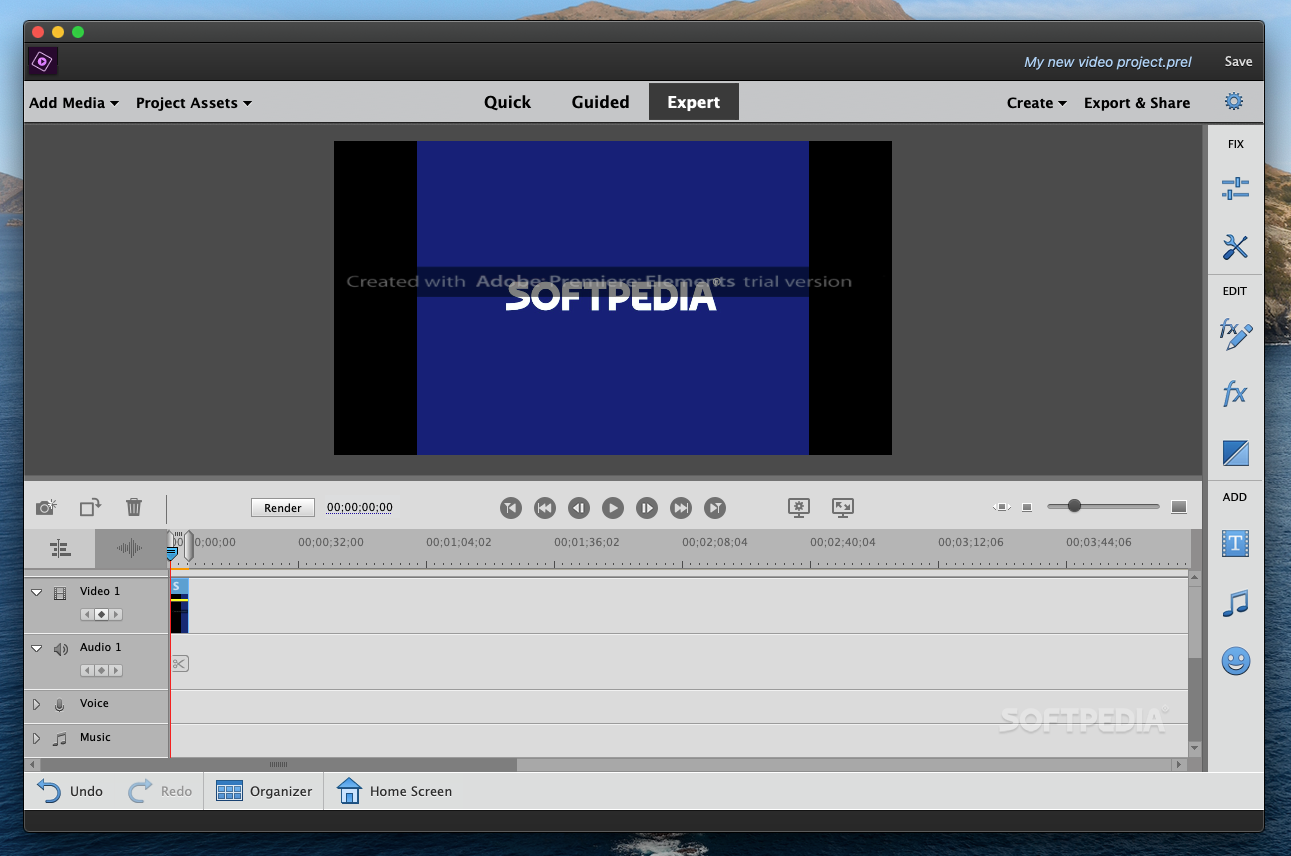

- #ADOBE PREMIERE ELEMENTS 14 TRIAL LICENSE KEY#
- #ADOBE PREMIERE ELEMENTS 14 TRIAL UPDATE#
- #ADOBE PREMIERE ELEMENTS 14 TRIAL PRO#
- #ADOBE PREMIERE ELEMENTS 14 TRIAL TRIAL#
- #ADOBE PREMIERE ELEMENTS 14 TRIAL PROFESSIONAL#
#ADOBE PREMIERE ELEMENTS 14 TRIAL PRO#
This feature made it into Premiere Pro in 2019.
#ADOBE PREMIERE ELEMENTS 14 TRIAL UPDATE#
What's New in Premiere ElementsĪ theme of this year’s Adobe Elements creativity software update is bringing AI smarts from its pro tools, Photoshop and Premiere Pro, to Elements users. When you first launch the program, it asks if you want to send diagnostic information to Adobe. On Windows, the app requires SSE2 support on the CPU and a DirectX 9 or 10 graphics card with at least a 1,280-by-800 resolution monitor. You also need a reasonably powerful machine with a multicore CPU of at least 2GHz and at the very least 4GB of RAM and 5GB available hard drive space. Make sure you have a fast Internet connection and a capacious hard drive before installing the program, as it requires at least 6GB of disk space.
#ADOBE PREMIERE ELEMENTS 14 TRIAL TRIAL#
A free trial gets you 30 days of full-featured program use, but any videos made with the trial are stamped with a watermark. If you're upgrading from a previous version, those prices drop to $119.99 and $79.99, respectively. Note that Premiere Elements is not a part of Adobe Creative Cloud service. These are one-time fees-no subscription needed. You can get Premiere Elements bundled with Photoshop Elements for $149.99 or as a standalone app for $99.99.

The program trails Editors' Choice winner CyberLink PowerDirector in the breadth of effects, rendering speed, and formats it supports, however. As well as being extremely easy to use, it lets you go fairly deep with multitrack and keyframe-based editing-or you can ignore all that and use its more-automated tools.
#ADOBE PREMIERE ELEMENTS 14 TRIAL PROFESSIONAL#
But really, anyone who wants to create compelling videos without tackling a complex professional application like Premiere Pro or Final Cut Pro can take advantage of Premiere Elements.
#ADOBE PREMIERE ELEMENTS 14 TRIAL LICENSE KEY#
The 30 day trial version is easily converted to the full purchased version by purchasing a license key from Adobe.

Premiere Elements 14 sells for $99 dollars US and is available for download at the Adobe website. To instantly switch from one mode to another it’s as easy as clicking on the appropriate word just below the title bar. Though I am spending most of my time in Expert mode, switching to Quick mode can be useful from time to time in order to gain quick access to certain features. The two most useful modes for my needs are Quick and Expert. Version 14 of the software has 4 modes, Live, Quick, Guided and Expert. It turns out that all of the features are present, but proficiency requires a bit of time and effort. Some of the options at first blush seem to be a bit hidden.īefore I pulled the trigger and purchased the unlock key from the Adobe website, I watched a number of tutorial videos on YouTube to make certain that the program could do everything I expected it to be able to do. I’m sure I will become proficient with them over time as I continue to use the software. My biggest complaint so far is that using the animated titles seems a bit clunky. I am still learning my way around the interface.

It’s quite flexible in output formats, and is capable of uploading directly to YouTube and Facebook. Unlike Final Cut Express, Premiere Elements 14 is quite up to date and handles all of the modern compressed digital file formats. Premier Elements 14 is somewhat different than Final Cut Express, but actually very similar since it is a linear editing approach. The recent purchase of a Microsoft Surface Pro 3 256 gigabyte machine inspired me to try out a trial version of Adobe Premiere Elements 14, the latest version of Adobe’s consumer verson of Premiere, which is aimed at high-end professional video editors. For the past year I’ve been doing relatively simple video editing on my phone. In the meantime, my 2007 MacBook Pro 17” inch became quite long in the tooth and I started leaving it at home. Just give me a linear editor with stackable clips and I can easily and quickly find my way around. Unfortunately for me, I’m one of those people that doesn’t like the iMovie interface. I really liked the Final Cut Express interface and was sad to see it be left behind. However, in 2011 Apple stopped developing it, and Final Cut express just wasn’t designed to work natively with compressed video file formats that virtually all modern cameras output. Back in the heyday of the FireWire interface, I became fairly proficient with Final Cut Express.


 0 kommentar(er)
0 kommentar(er)
